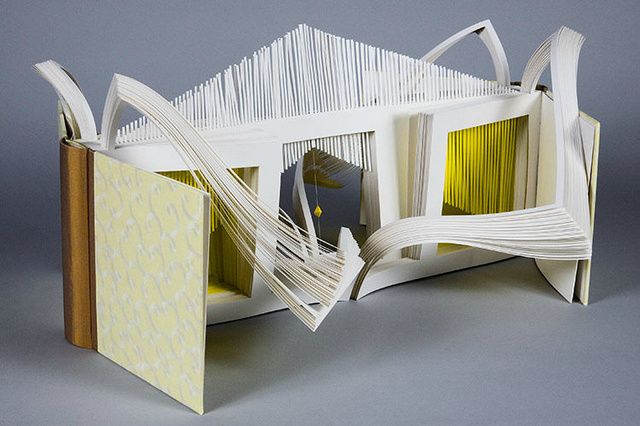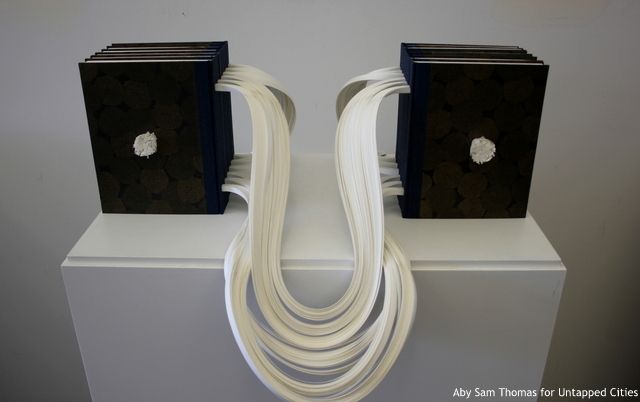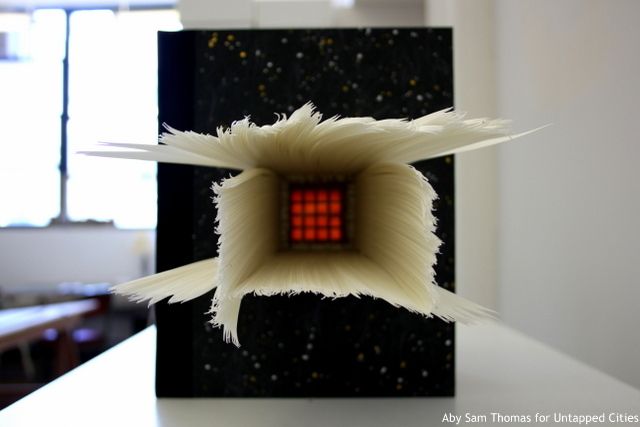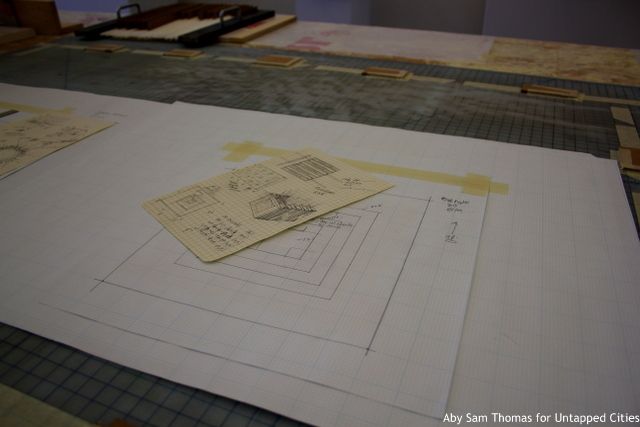Last Chance to Catch NYC's Holiday Notalgia Train
We met the voices of the NYC subway on our nostalgia ride this weekend!


While books have always been known to contain art, they are hardly thought of as being works of art by themselves. But the making of a book is very much an artistic process—sure, it may be hard to see in the commercial book bindings that we have become used to seeing these days, but a look at the traditional and historic methods used to craft a book is enough to understand that making a book remains a complex, painstaking and beautiful endeavor.

But for Chris Perry, an artist based out of DUMBO in Brooklyn, bookmaking was just the first step—his artistic vision wasn’t limited to just the process involved in creating a book. Perry wanted to do more with the books he created—they had to tell stories too. So he started to make flip books to tell different stories, but Perry wasn’t satisfied with that. He envisioned his books to be much more than what lay in between its pages.


“My old books were really just, sort of, self-contained,” Perry remembered. “But the problem is you can’t see the whole story—you have to flip the pages to see the story… I wanted to see everything.” He tried using vellum to show all the imagery in his flip-books, but he was limited in the number of pages he could use for such a project. So, he returned to paper and began to cut away the flip instead—while you could still see the story flicking through the pages, you were now also able to see it by simply looking at the book as a whole.


The cutting of the pages (which is a laborious process by itself) led Perry to further increase the scope of his books as artwork. “I started thinking: well, why am I limiting myself to just the perimeter of the cover?” Perry recalled. “And so, I started extending beyond the cover.” Perry’s books began to have protrusions, links and weaves—today, his creations are less like books and more like sculptures; paper structures that are both beautiful and baffling at the same time.


There’s a lot of careful drawing and measurement that goes into making one of Perry’s creations, but one is able to see that only in the intricate cuts that are contained in the books that he crafts. From the tiny sliver-like protrusions on each of the pages to the weaving together of flowing streams of paper, one can spend a lot of time marveling over the various minute details effortlessly contained in Perry’s artworks.


Perry talks about the processes involved in creating his books on his Facebook page, where fans can see how he begins his work with a delivery of paper from Italy, which is then drawn upon, cut and glued together to become striking pieces of art. Perry told me that he doesn’t use a guillotine for cutting the paper—he instead chooses to use rotary cutters that give him the precise cuts and patterns that he wants for his pages.


Now, while pictures of Perry’s creations are absolutely great to look at, I have to admit that they are nothing when compared to actually seeing his work with one’s own eyes. Perry told me that his studio in DUMBO is always open to visitors, and as someone who did take him up on his invite, I’ll say this: Perry was a gracious host, taking the time to explain to me his vision and method of doing what he does. So if you’re interested in his work, shoot him an email or call him at his studio—Perry’s work is definitely worth a visit.

See more of Chris Perry’s work on his site, and you can also follow him on Facebook and Twitter.
Get in touch the author of this article on Twitter: @thisisaby
Subscribe to our newsletter